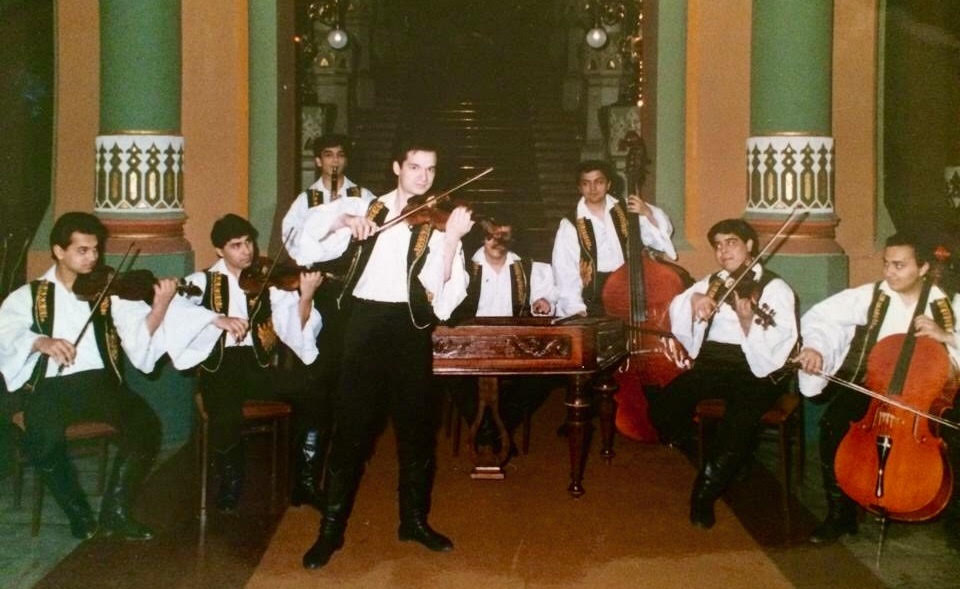 It was Bálint Sárosi who used the term “Hungarian Gypsy music” in his paper, differentiating the authentic “Gypsy music” from the Hungarian Gypsy music; the latter is Gypsy-like in respect of its performance and intensity. The instruments of Hungarian Gypsy bands are similar to those of folk bands, and in the case of a large number of band members they are often called “Gypsy symphonic bands”. The unique nature of the performances and repertoire is also due to the fact that the members of the band are exclusively of Roma origin.
It was Bálint Sárosi who used the term “Hungarian Gypsy music” in his paper, differentiating the authentic “Gypsy music” from the Hungarian Gypsy music; the latter is Gypsy-like in respect of its performance and intensity. The instruments of Hungarian Gypsy bands are similar to those of folk bands, and in the case of a large number of band members they are often called “Gypsy symphonic bands”. The unique nature of the performances and repertoire is also due to the fact that the members of the band are exclusively of Roma origin.
History of the Hungarian Gypsy music was in a close connection with the rise of national consciousness in the 19th century. That was the time when entertainment with Hungarian popular songs and Gypsy bands became fashionable among the Hungarian nobility. The lyrics of the sings were often written by poets. During few decades such music gained popularity all over Europe, even in royal courts. The style also inspired Franz Liszt and Brahms.
Gyula Farkas who was a composer orchestrator and teacher instructing talented Gypsy children, was a member of the band. Many of them came from well-known musician Gypsy families; however, some of the gifted children were raised from poverty. Gyula Farkas laid the foundation of the worldwide fame of the Rajkó Orchestra with his unique pedagogic methods and special musical style. The repertoire included classical music compositions inspired by the play of Hungarian Gypsy musicians (Hungarian Rhapsodies by Franz Liszt, Hungarian Dances by Brahms), Hungarian verbunk (Bihari, Lavotta Csermák, Erkel), Hungarian folk music, popular composed music, classical music, light music and religious music adapted to the Gypsy band by Gyula Farkas, in a special interpretation according to Hungarian Gypsy music.
The “rajkós” (means young masters or Roma children) received treasure to their hand and for their soul from Gyula Farkas; they, as members of the orchestra, which earned worldwide fame soon after its foundation, have had a chance to perform in concert halls worldwide, and at the same time they have enhanced the reputation of our country. The genre which rose to the level of productions of concert halls due to the instrumentation of Gyula Farkas has spread as something Hungarian unique in the world.
Our orchestra follows the traditions of the Hungarian Gypsy music with its performances exciting and special for the audience of our age as well.
 |
 |
 |
 |
 |
| History | Picture | Video | Music | Contact |
